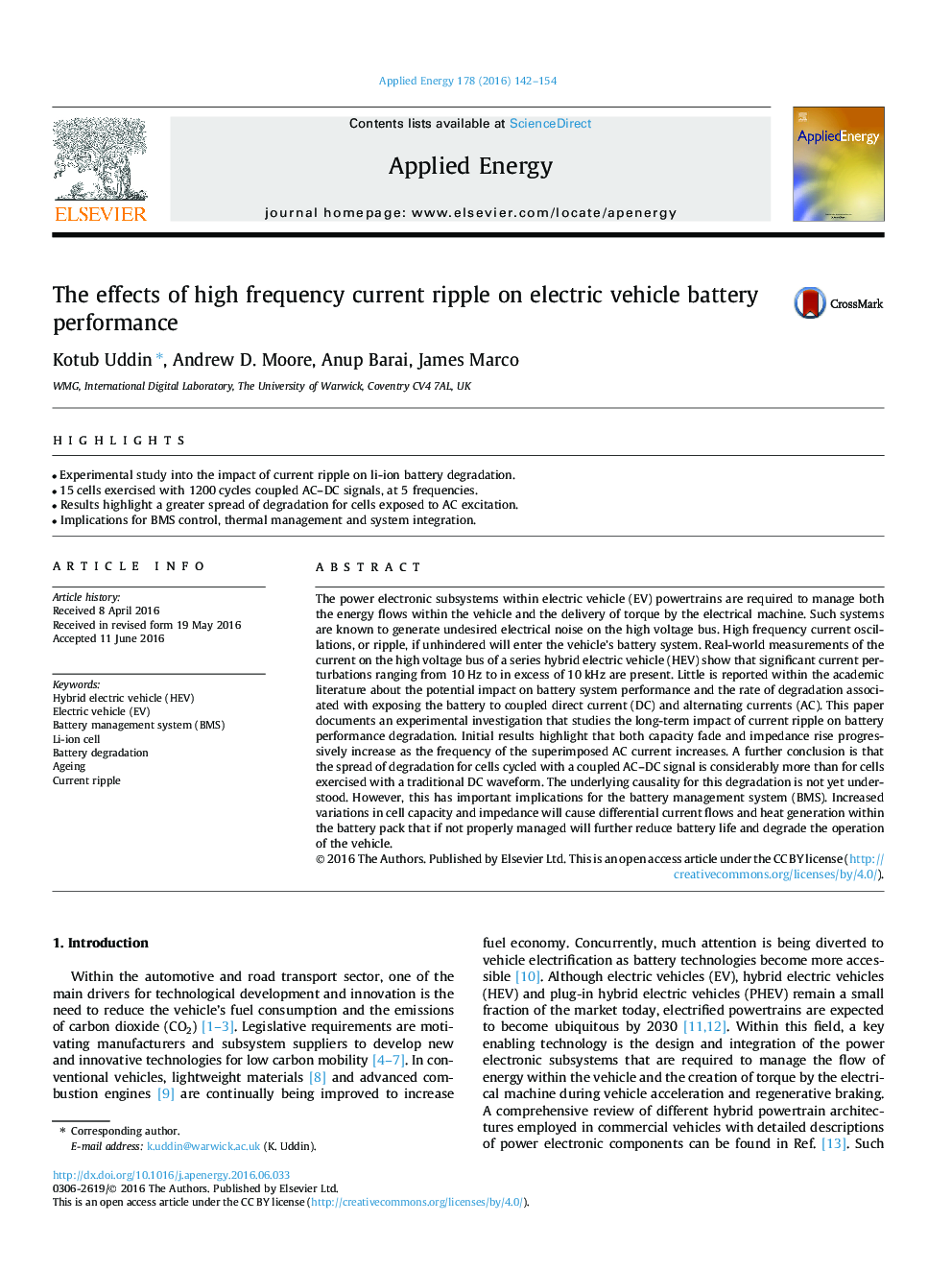| Article ID | Journal | Published Year | Pages | File Type |
|---|---|---|---|---|
| 6682434 | Applied Energy | 2016 | 13 Pages |
Abstract
The power electronic subsystems within electric vehicle (EV) powertrains are required to manage both the energy flows within the vehicle and the delivery of torque by the electrical machine. Such systems are known to generate undesired electrical noise on the high voltage bus. High frequency current oscillations, or ripple, if unhindered will enter the vehicle's battery system. Real-world measurements of the current on the high voltage bus of a series hybrid electric vehicle (HEV) show that significant current perturbations ranging from 10Â Hz to in excess of 10Â kHz are present. Little is reported within the academic literature about the potential impact on battery system performance and the rate of degradation associated with exposing the battery to coupled direct current (DC) and alternating currents (AC). This paper documents an experimental investigation that studies the long-term impact of current ripple on battery performance degradation. Initial results highlight that both capacity fade and impedance rise progressively increase as the frequency of the superimposed AC current increases. A further conclusion is that the spread of degradation for cells cycled with a coupled AC-DC signal is considerably more than for cells exercised with a traditional DC waveform. The underlying causality for this degradation is not yet understood. However, this has important implications for the battery management system (BMS). Increased variations in cell capacity and impedance will cause differential current flows and heat generation within the battery pack that if not properly managed will further reduce battery life and degrade the operation of the vehicle.
Keywords
Related Topics
Physical Sciences and Engineering
Energy
Energy Engineering and Power Technology
Authors
Kotub Uddin, Andrew D. Moore, Anup Barai, James Marco,
